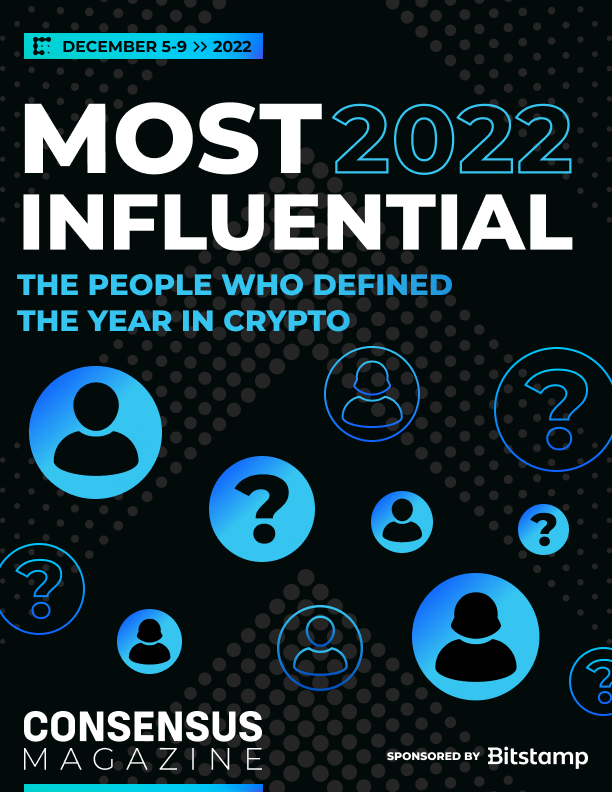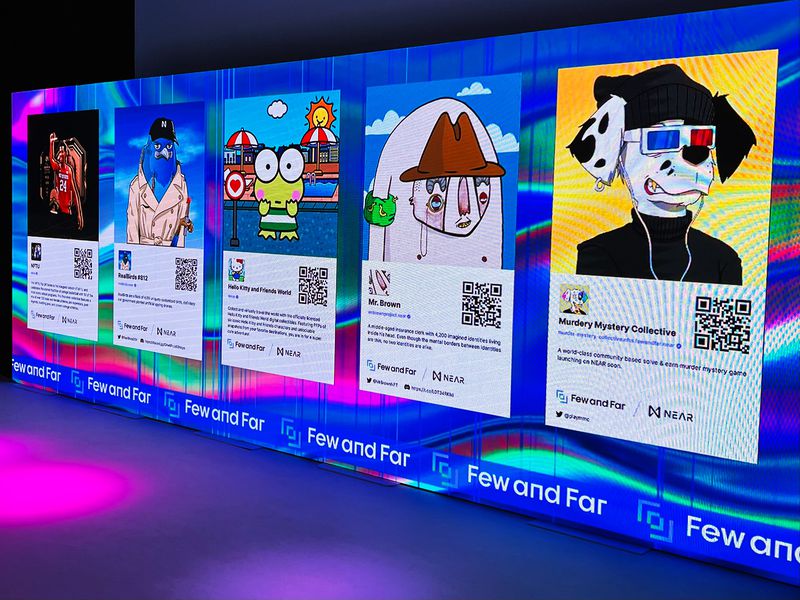While securities laws have been a driving force in crypto policy, it is important to consider intellectual property rights when dealing with non-fungible tokens. Treating all NFTs like financial assets will undermine the U.S. position as the gold standard for IP protection and enforcement.
This one-size-fits all approach poses a danger to the commercial prospects for this new technology. NFTs can be used to not only improve the way we use, monetize and create IP but also how brands and artists interact with their audience. Policy efforts must encourage and protect U.S. IP rights owners who use NFTs to expand their creative portfolios.
This article is part CoinDesk’s Policy Week. Palm NFT Studio’s general counsel is Diana Stern.
IP is an essential part of the U.S. Economy. According to the U.S. Patent and Trademark Office The USPTO, industries that use IP protection extensively, including broadcasters, manufacturers, and independent artists, accounts for more than 41% of U.S. GDP (GDP). They also employ one-third the entire workforce. According to the Chamber of Commerce, American IP is worth $6.6 billion, which is more than any other country’s nominal GDP. It also accounts for 52% of all U.S. merchandise exporteds. Global IP Center (GIPC).
A strong IP regime encourages creators and companies alike to create new IP and take advantage of their rights in novel ways. The USPTO is part of this reason. We are only beginning to see how rights owners will achieve this. Requested Information about this industry that is still growing.
NFTs in corporate America are moving beyond novelty research and development (R&D), to digital marketing that is more effective than traditional channels, and even new ways to monetize IP assets. NFTs were sold by Tiffany & Co., Nike and other household names in 2022. This resulted in tens to millions of dollars in revenue. Over $1 billion in sales volume.
NFTs have a direct impact on the bottom line, and are changing how companies communicate with their customers. In the past, fan fiction could have led to a cease and desist letter or even a suit from the IP rightsholder. But today, the leading U.S. comic publisher DC Comics teamed up with Palm NFT Studio in order to create one the largest writers’ rooms. They invited holders of their NFTs to help shape the story of future comics. Through NFT drops, companies have created entire communities of brand ambassadors. Holders can also stay engaged through exclusive experiences that are only available to them.
Engaging experiments are another way artists can increase their fan base. Yam Karkai, a digital illustrator, and her co-founders, created the World of Women NFTs, a collection that celebrates art representation, inclusion, equality, and equal opportunities. WoW was a part of Guy Oseary’s celebrity clientele. They also signed a deal to work with Hello Sunshine media company Reese Witherspoon and established a foundation that empowers women in Web3. U.S.-based artists Tyler Hobbs, Dandelion Wistmane and Dandelion Wat Mane were the creators QQLThe project invites collectors and others to co-create the algorithm that will add an NFT to their collection. The project was sold to a record $17 million in 2022, after NFT sales had slowed down. This demonstrates the potential for enduring demand for IP-driven NFTs.
Also see: What do you actually own?
Enforcement of rights
As creators stake their claim in the metaverse, they already use trademark and copyright law to protect their rights. Yuga Labs (US) v. Ryder Ripps was a case in which a conceptual artist sued Ripps for trademark infringement after he made copies NFTs of the startup’s NFTs. Nike v. StockX was a lawsuit in which Nike claimed that StockX violated its trademarks by making NFTs that correspond to physical shoes it sells on its marketplace. StockX claims this is permissible under the first-sale doctrine.
The Creative Commons license, also known as CC0 (which allows for unlimited reuse of the work) is at the opposite end of the spectrum. It has become very popular in the NFT community.
The U.S. IP rights regime supports greater commercialization through NFTs of IP portfolios. NFTs can also be part of the enforcement toolkit. Service of the process NFT has given this information, and NFT is currently developing use cases to combat counterfeit and stolen goods.
But, I wouldn’t recommend looking into NFTs or the smart contracts that we use to transact them. These smart contracts are not traditional digital rights management tools like software that blocks you from copying a song to send it to a friend. To copy and paste images associated with NFTs, you can right-click on the image. This does not mean that you will be able to use the NFT for all experiences the verified holders have access to, nor that it will lose any value. The NFT image can be ripped without permission. It is similar to having a photocopy signed memorabilia that does not have a certificate of authenticity. It does not necessarily mean that you are the rightful owner of the image from an IP perspective. You may have violated the rights depending on how the NFT was licensed.
NFTs may not be as IP-focused as the examples here. We saw the rise in financialized NFTs last year, which include platforms that allow borrowers to use NFTs to secure collateral, and projects that offer high returns to “investors”. These may be subjected to securities, lending and/or other financial regulations.
Gary Gensler (current chairman of the Securities and Exchange Commission) has stated that most fungible tokens can be considered securities. The momentum of IP-driven NFTs will be slowed down if the SEC and state regulators of securities take a similar broad view of the NFT marketplace. The technology used by these NFTs would cause regulatory restrictions on securities. They are not fit for purpose. Other drawbacks include the inability to transfer creative works and the possibility that artists could accidentally become investment companies.
Disincentives
All NFTs being placed in a securities box will discourage creators and enterprises from taking advantage new technologies. It will also reduce the economic benefits of the U.S. IP regime. Effective IP protection like the U.S. today makes economies 70% more likely produce innovative output and almost 40% more likely attract venture capital and private investment. According to the GIPC.
Securities laws do not provide the right framework to address the most significant regulatory risk for IP-centric NFTs, which is potential consumer harm. Scammers are also waiting to profit from buggy beta tools and newcomers, just like in other emerging industries.
Many projects were launched in the height of NFT expectations in 2021 with lofty claims and roadmap promises. However, when founders vanished with funds, this was a “rug pull.” The U.S. Department of Justice proved that it can and will stop rug pulls by bringing criminal charges against NFT projects. Frosties And Mutant Ape Planet.
Also see: Do You Need to Copyright NFTs? | Opinion
The Federal Trade Commission and the state Attorneys General are responsible for strong consumer protection in the United States. Many rights holders are familiar with the consumer protection laws that apply to their products or services and can adapt existing guidelines, controls, and review processes for NFTs.
Instead of having the SEC leading the NFT space using a regulation-by-enforcement approach, as it did with fungible tokens; the growth of NFTs needs to be guided by an IP aware policy approach that addresses consumer harm and encourages artists, brands, and fans, to explore the potential of new technologies. This will help usher in the next generation of valuable IP.
We will witness a runaway production of NFTs before the U.S. creators or IP rights holders have seen even a fraction.

:format(jpg)/cloudfront-us-east-1.images.arcpublishing.com/coindesk/XSGROYJHJZARZL2MBDM3K4YPD4.jpg)
:format(jpg)/cloudfront-us-east-1.images.arcpublishing.com/coindesk/L424LOKPRJC5ZIZZ2OGEG2KGOY.jpg)
:format(jpg)/cloudfront-us-east-1.images.arcpublishing.com/coindesk/LIFZBSGFYZHJ7OX5UDMOYBOQ7Q.jpg)
:format(jpg)/cloudfront-us-east-1.images.arcpublishing.com/coindesk/QJWWDSKDBRBH7AMCE66WKOJ4IU.jpg)
:format(jpg)/cloudfront-us-east-1.images.arcpublishing.com/coindesk/3AF7FUVKZRDG3BKIXDFUGHYIKY.jpg)
:format(jpg)/cloudfront-us-east-1.images.arcpublishing.com/coindesk/2LESVEAVYZGZRGQAIPPUR5V3KA.jpg)
:format(jpg)/cloudfront-us-east-1.images.arcpublishing.com/coindesk/HJRNTGSOGJFO5PB3MHCKYPRJ7Q.jpg)
:format(jpg)/cloudfront-us-east-1.images.arcpublishing.com/coindesk/PHSCU3EBWNBYLD3MY6QOR3Y3Y4.jpg)

